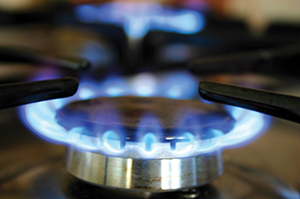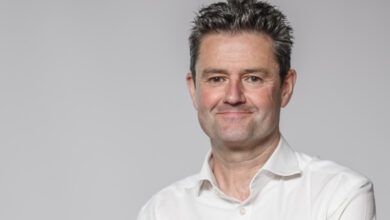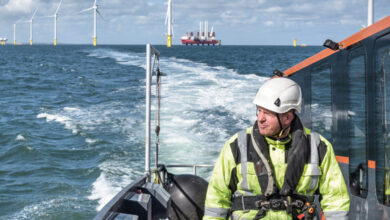The importance of gas
 Chris Le Fevre the Senior Visiting Research Fellow at the Oxford Institute for Energy Studies (OIES) and former Utility Regulator board member discusses the findings of the OIES Natural Gas Research Program.
Chris Le Fevre the Senior Visiting Research Fellow at the Oxford Institute for Energy Studies (OIES) and former Utility Regulator board member discusses the findings of the OIES Natural Gas Research Program.
Gas is the single largest source of power generation in Great Britain, but with a rapidly changing energy market across the United Kingdom and Ireland what role will it play in future energy production?
The use of gas in energy consumption is declining and one of the major reasons for this is the increase in the use of coal and wind in electricity generation. Gas consumption was at its peak at the turn of the century before falling sharply post 2008. Despite this, gas still accounted for 27 per cent of power generation in 2013.
According to Le Fevre, one of the major problems with natural gas policy is that it is rarely treated as a fuel in its own right. Upstream is referred to as the oil and gas sector, in power generation it is a fossil fuel lumped in with coal, while the energy retail sector comprises electricity and gas suppliers.
Gas has lost its separate identity and there are in fact no gas companies left in Europe. “Nearly all energy companies are involved in energy provision of more than one type,” said Le Fevre. “One of the issues is that gas is often treated as a balancing item. Gas has been referred to by a colleague as ‘gas by accident rather than by design’ and I would argue that is potentially damaging.”
Affordability
Turning his attention towards the energy trilemma, Le Fevre addressed the affordability of gas in power generation. He noted that the commodity price surge of oil and gas has had a major impact on the use of gas and expressed his concern that a consequence of the falling demand for gas has resulted in increased unit costs due to the restively fixed cost of networks. Consumer gas prices could also rise as a result of the Competition and Markets Authority (CMA) observation that at present, gas has a relatively low level of environmental and social charges compared to electricity. On the other hand gas wholesale prices could fall further and if so a spotlight will be placed on how quickly this saving is passed to the consumer.
With the focus of many in the energy industry on legally binding decarbonisation targets Le Fevre questioned how realistic these objectives might be. One of his concerns was that that by specifically targeting renewables, other options including carbon capture and storage were being neglected. Though he did acknowledge that the carbon price floor is starting to shift the balance in favour of gas in recent months.
Speaking about environmental policy Le Fevre said: “It seems to me there is always a risk in any environmental policy that seems to be more carrot than stick that governments end up picking winners.” Government forecast that by 2030 renewables will be competitive with combined cycle gas turbines (CCGT) but this is based on a high fuel price assumption that may not be appropriate anymore.
“The wind and solar elements of this assumption will require a degree of backup due to intermittency which hasn’t been factored in. Looking at the future, the basic message is that under all scenarios even the most aggressively environmentally focused one gas is still accounting for around 20 per cent of capacity and 20 per cent of output through to 2035. At the moment the view is gas will still be playing a significant role in power generation.”

Heat
At present 80 per cent of heat generation in the United Kingdom comes from gas and the transition to a greener source of heat generation will, in Le Fevre’s view prove difficult due to simple physics. Research suggests that even moving 30 per cent of the small user heat load to electric heating would double daily electricity demand and he warned that the public are yet to realise how costly decarbonising the heating system will prove to be.
Security of supply
Security of supply is an important policy issue: increases in import dependency, supply shocks and alleged shortage of gas storage have led to concerns over the reliability of gas and our market’s dependence on it. However as Le Fevre was quick to point out, the N-1 calculation that tests a nation’s resilience to losing its single biggest source of supply shows that the UK is in a good position to cope with a major supply disruption.
“The third energy package, the European Target Model and the European Commission’s energy objectives are all aimed at improving the resilience and interdependence of energy systems,” said Le Fevre.
“As we have seen, demand for gas is falling both in aggregate terms and on a peak day basis. Total system capacity is 600 million CU-M3 on a peak day. Peak demand is close to 500 million CU-M3 so there would appear to be a margin there, the big question of course is where is that gas actually going to come from? The answer is we don’t really know from one year to the next so that means that the system has to be able to cater for an increased amount of flexibility.”
One of the biggest concerns around the supply of gas is the United Kingdom’s Continental Shelf (UKCS) reserves. Le Fevre suggests these fears may be overstated noting that the UKCS will remain an important part of the UK’s gas supply provided a disadvantageous tax regime and co-ordination problems between producers, explorers and infrastructure owners can be resolved. However he is less optimistic about new investment in UK storage facilities in present market conditions.
Le Fevre believes that gas will continue to play a key role in managing the trilemma but an integrated, focussed strategy will be required to ensure this happens. A major benefit in terms of price and affordability of gas is the existing wholesale market and the UK’s high levels of import and export capacity. Ultimately, Le Fevre feels that gas should also be the fuel of choice in thermal power generation. “More attention should be placed on carbon capture and storage and there should be a much more cost benefit driven approach to how gas will deliver heat in the future,” he concluded.





